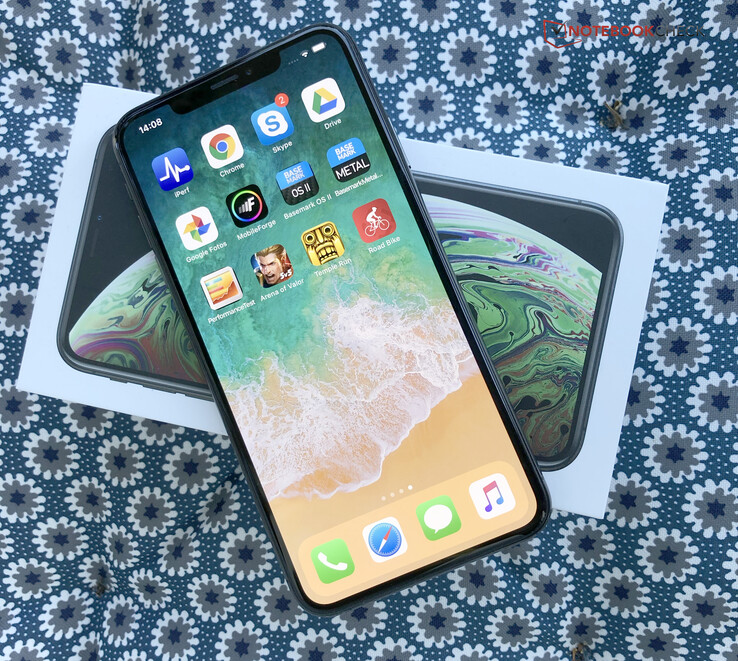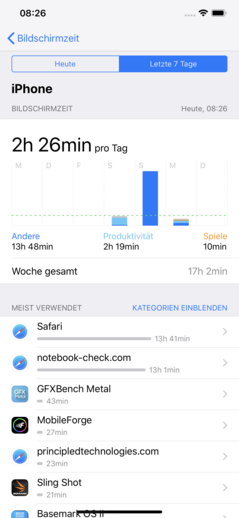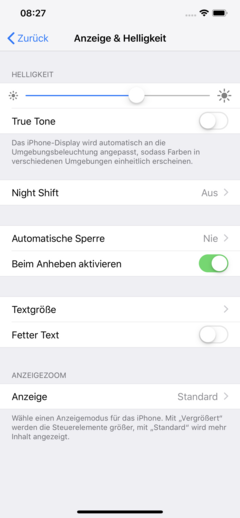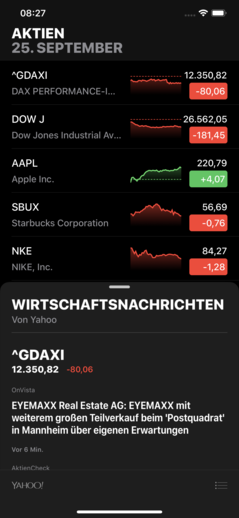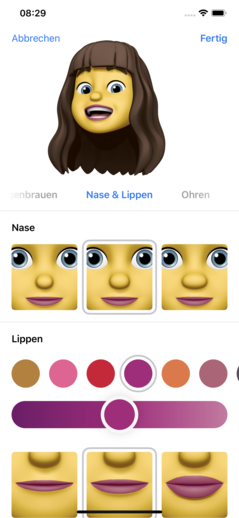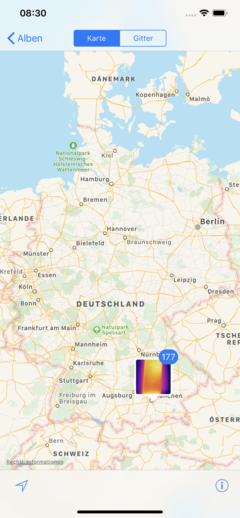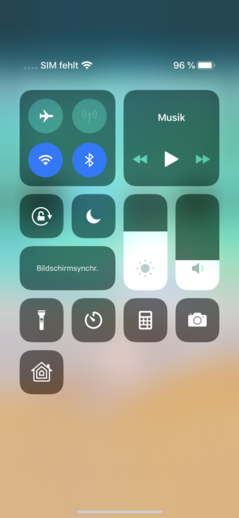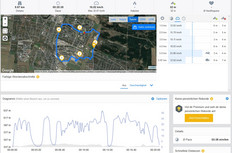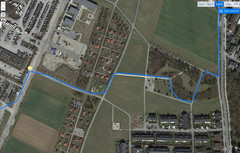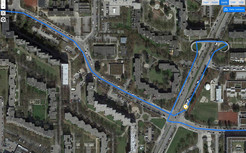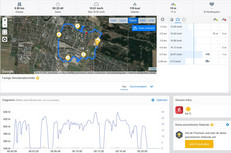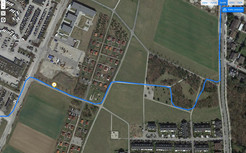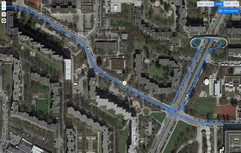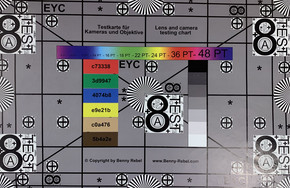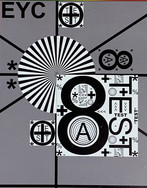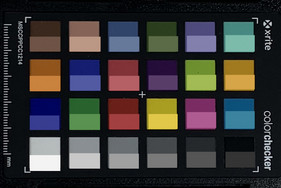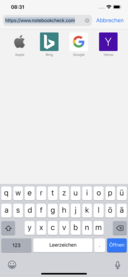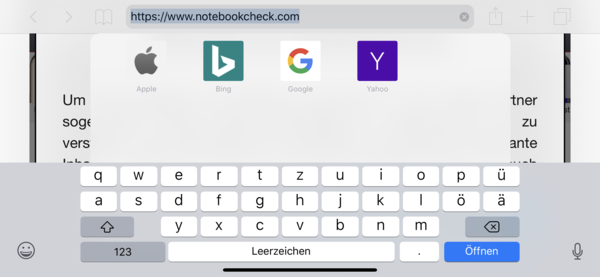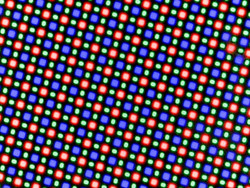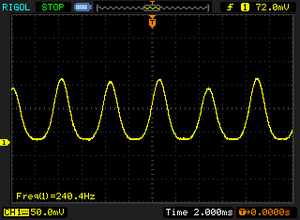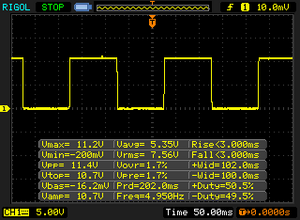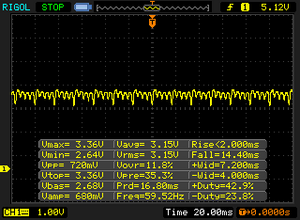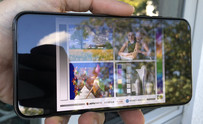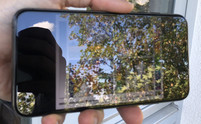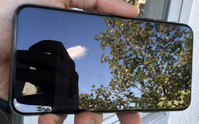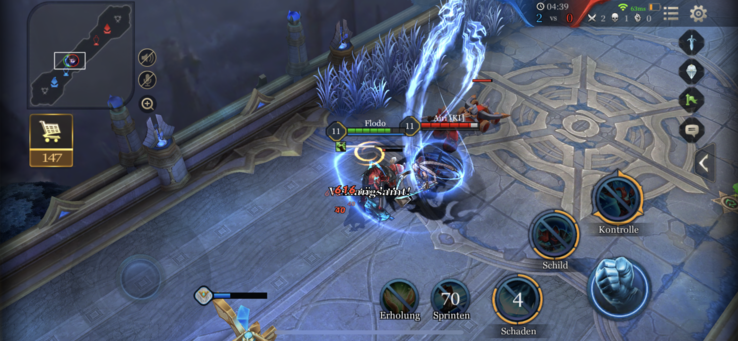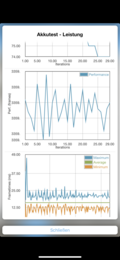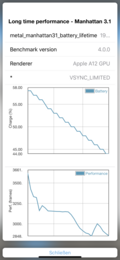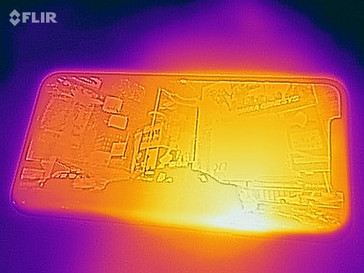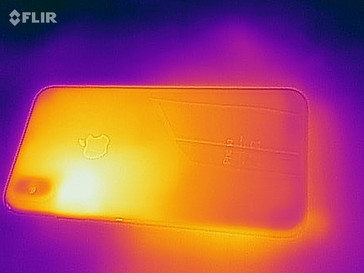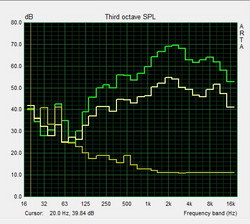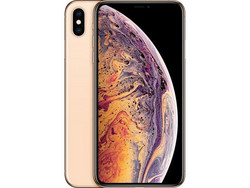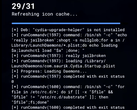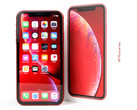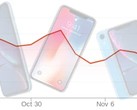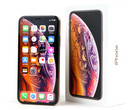Apple iPhone XS Max Smartphone Review
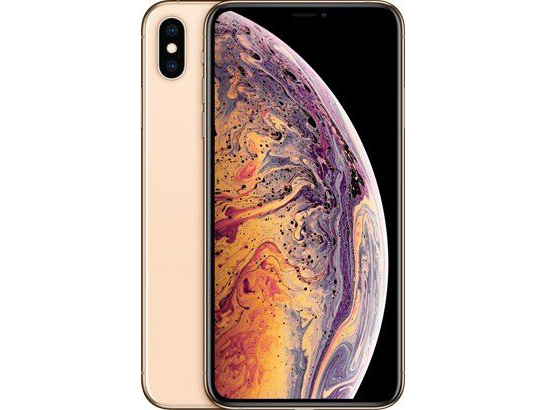
How the iPhone XS Max improves over its predecessor is best summarized as follows: a higher quality and huge 6.5-inch notched display, a faster processor, even safer FaceID and a better camera. The XS Max is Apple’s largest and most expensive iPhone yet, costing almost 2,000 Euros (~$2,346) for the 512 GB version when bought with Apple Care; a truly eye-watering amount of money for a smartphone. What is more, the cheapest version costs a whopping 1,249 Euros (~$1,465). However, while the XS Max replaces its iPhone 8 Plus and X counterparts, Apple is still selling its older models such as the 7 and 8. Hence, you can still dip your toe into the iPhone ecosystem from 519 Euros (~$608).
The XS Max faces stiff competition from Android flagship devices to be crowned the best smartphone of 2018. We have chosen to compare the XS Max against not only its predecessor, but also the Sony Xperia XZ2 Premium, the Samsung Galaxy Note 9, the Google Pixel 2 XL, the Huawei Mate 10 Pro and the LG G7 ThinQ. Let battle commence.
Case
The iPhone XS Max follows the same design as the iPhone X, but on a larger scale. The camera sensors are still in the same place, the back has the same simple reflective glass design, and the frame is still made of stainless steel. Equally, the XS Max retains the iPhone X’s infamous notch, and it is just as thick at a reported 7.7 mm (~0.3 in).
The XS Max is considerably heavier though at 208 g (~7.3 oz) given its gargantuan size. However, the device is a few grams lighter than both the Samsung Galaxy Note 9 and the Sony Xperia XZ2 Premium. The 6.5-inch display has plenty of screen space even if you discount the areas surrounding the notch.
The XS Max is available in either Space Gray, Silver or a new Gold variant. According to Apple each of the XS series’ stainless-steel frames are sophisticatedly matched to their respective case color. The fit and finish of our 64-GB Space Gray XS Max test device is excellent, but the whole device is a fingerprint magnet. Apple further claims that they use the most structurally stable glass ever used in a smartphone in their XS series devices. We would recommend getting a screen protector and a case to protect your XS Max, even though Apple’s outlandish claim proves to be true as initial drop tests indicate that the iPhone XS is structurally stronger than its bigger sibling. Equally, the iPhone X’s metal case is susceptible to scratches, so it is likely that the XS Max’s will be too as they are both made of the same alloy.
The device should be strong enough for daily use, particularly as we could not get the case or display to deform with any amount of pressure that we applied with our hands. Annoyingly, our test device creaks audibly when we twist it, which is not something that we would expect from such an expensive smartphone. Equally, the iPhone X does not creak either. Moreover, our test device sounds rather hollow when we tap on the display, but this is a superficial complaint more than anything else.
The case is IP68 certified, but Apple limits the XS Max to just thirty minutes of underwater submersion. However, the device is also resistant to more aggressive liquids such as beer and chlorine, which is an improvement over the iPhone X’s liquid resistance.
Connectivity
The XS Max comes in a choice of 64 GB, 256 GB or 512 GB storage options with prices ranging from between €1,249 to €1,649 (~$1453 to $1919). All three variants have the same hardware except for the different storage volumes. Additionally, the XS Max does not support a microSD card expansion so make sure that you pick the right option before purchasing the device.
The XS Max has 4 GB of RAM, a 1 GB increase over the iPhone X. 4 GB is less than other current flagship devices, but iOS has better background app management than Android, so 4 GB of RAM should be enough for the foreseeable future.
The device has a physical nano-SIM slot and an eSIM soldered to the logic board. In theory, the XS Max is a dual-SIM device, but currently eSIM plans are only available for smartwatches in Germany. We imagine that this will change with the launch of the iPhone XS series, but at present, the XS Max operates as a single SIM smartphone in Germany.
The Lightning port remains the only port on the XS Max through which you can charge the device, transfer files and connect adapters for video and audio output. Apple included a Lightning to 3.5 mm adapter with last year’s iPhone X, but this is now a €10 (~$12) optional purchase. While reasonably affordable, Apple could have continued to include this with the iPhone XS series device.
Software
Apple has introduced iOS 12 alongside its iPhone XS series, which brings a host of new and updated features over iOS 11. Apple is often praised for the length of time they support their hardware, and iOS 12 is no different. Devices as old as the iPhone 5S and the iPad Air will be updated to Apple’s latest mobile OS, which should give these older devices updated features and a tangible speed boost. We will cover our main highlights of the new updates and refinements that iOS 12 brings to the party below.
Apple has updated FaceTime to support up to thirty-two simultaneous callers who can disconnect and reconnect if needed. Likewise, iOS 12 brings a wealth of Animoji updates, the main one of which is the Memoji. Memojis are essentially Animojis but with your face. Apple has expanded the range of Animojis too. However, Animojis and Memojis are restricted to only the iPhone X or the new XS series.
Developers can now also create VR applications that can connect to two devices simultaneously, which could be used for two-player VR games, for example. Apple demonstrated the functionality with a demo app at a press conference in August. The app worked well and has now peaked our interest as to what developers can now create.
Moreover, iOS 12 introduces a new feature designed to monitor your usage time on apps over a given period. The feature also allows you to place a time restriction on categories of apps should you wish. The latter of these could prove particularly useful for parents who want to track and limit the amount of time their children useon certain apps, such as games.
Notifications are now grouped on the lock screen per app. Additionally, you can now manage notifications directly from the lock screen, an example of which is the do not disturb function. Enabling this feature will hide all incoming notifications from your lock screen, and you can set it to end after a certain time or for when an appointment ends.
The photo gallery has seen updates too. Friends can now share photos from the same event with each other, which may be practical when you and your friends have all attended the same concert together. iOS 12 also brings AI to the photo search function to better contextualize your photo searches.
Likewise, Apple has updated Siri so that she now understands user-definable shortcuts such as navigating to a specific friend’s house by just saying the word “friend”. Siri will then automatically execute the operation just from hearing your chosen trigger word.
iOS 12 now blocks widgets or share buttons from tracking you without your consent within Safari. Furthermore, Safari can also generate secure passwords on request that can then be auto-filled without you needing to remember any of your long passwords.
iOS 12 also introduces visual and design updates to other Apple apps.
Apple promises that user data will not be sold to third-party companies and that data which is collected for evaluation purposes will be anonymised to prevent any data from being traceable to individual users. Apple also wants to enforce these stricter data privacy rules on third-party apps.
Communication & GPS
The XS Max supports all Wi-Fi standards up to IEEE 802.11 ac and has comparable Wi-Fi performance to other flagships, even if the Sony Xperia XZ2 Premium scores a few MBit/s higher in iperf3 Client Wi-Fi tests. We tested the XS Max and all our comparison devices with our Linksys EA 8500 reference router. Websites load quickly, and our test device has full Wi-Fi reception when close to the router. Wi-Fi reception dropped by a third when we tested the XS Max around ten meters (~33 ft) away from the router, but websites still load quickly.
The XS Max retains the iPhone X’s solid LTE capabilities. As with its predecessor, the XS Max has Gigabit LTE, but the Samsung Galaxy Note 9 achieves slightly faster LTE speeds. However, there should be no discernible difference in practice between the XS Max and the Note 9’s LTE performance. The XS Max should have LTE coverage practically the world over, thanks to LTE Band 27 support, which is an improvement over the iPhone X. Our test device maintained solid LTE reception on the German D2 mobile network and full network coverage indoors.
The XS Max also supports Bluetooth 5.0 and NFC, albeit the latter is limited just to read mode.
Our test device found our location and compass orientation quickly and maintained within Apple Maps regardless of whether we used the device indoors or outdoors.
We took the XS Max on a bike ride to test its location accuracy against a professional navigation device, the Garmin Edge 520. Our test device recorded the course well, but deviated by 230 meters (~251 yd) over a 5.67 km (~3.3 mi) ride. The XS Max struggles to maintain the same degree of accuracy as the Garmin when riding over a road bridge. However, our test device plots our route more precisely when cycling on flat roads. Small deviations are probably unavoidable, but overall the XS Max should be suitable for all general navigation tasks that do not require absolute GPS precision.
Telephone Function & Call Quality
The phone app remains unchanged in iOS 12 and continues to open into the number pad upon which you can switch to contacts or call history via the tabs at the bottom of the app. The Phone app also lists calls from other apps such as Skype within your call history.
Our call partner sounds clear and without any background noise when we make a call over the earpiece at medium volume. However, we noticed that their voice started to boom upon increasing the call to maximum volume.
By contrast, we sounded clear and detailed to our call partner at all volumes over speakerphone, although the speaker again failed to output our call partner’s voice clearly at maximum volume.
Cameras
The XS Max’s cameras appear unchanged from the iPhone X. The XS Max still has a 7 MP front-facing camera and dual 12 MP rear-facing sensors that are capable of two times optical zoom. The rear-facing cameras are also supported by a four-color LED flash that allows the XS Max to create the right lighting for photos in practically every scenario.
However, Apple has improved the XS Max’s rear-facing cameras, adding Smart HDR for greater dynamic range and the degree of depth of field can now be adjusted after taking a photo. Moreover, the main camera has larger pixels than its predecessor, which helps the XS Max take sharper and brighter pictures in low-light than the iPhone X. Moreover, photos shot with our test have better image dynamics and color reproduction than those taken with the iPhone X.
The XS Max can record videos in up to 4K at 60 FPS. Videos look detailed, with good exposure and vibrant colors. OIS works with 4K videos, but 1080p videos have better image stabilization in our opinion. The XS Max can also shoot slow-motion videos in up to 1080p at 240 FPS, which is eight times slower than traditional 30 FPS videos. The speed of videos can be adjusted subsequently, which is useful, although for some reason these videos are only played at their original framerates on other devices.
As with its predecessor, the XS Max has a 7 MP camera and the display can still be used as a quasi-LED flash. The front-facing camera is particularly good at detecting faces and depth of field in portrait mode. The XS Max also retains the stage lighting feature from previous iPhones, which worked well during testing albeit with some minor issues such as effects being applied inconsistently to background images.
Image comparison
Choose a scene and navigate within the first image. One click changes the position on touchscreens. One click on the zoomed-in image opens the original in a new window. The first image shows the scaled photograph of the test device.
We also tested the XS Max under controlled lighting conditions. Our test device reproduces our test chart well with good details, although the degree of sharpness across the whole image could be better. Image dynamics are good too, but colors are reproduced too darkly when compared to references colors using ColorChecker Passport.
Accessories & Warranty
The XS Max comes with a charger, a USB Type-A to Lightning cable, a pair of Lightning headphones, a SIM tool, a quick start guide and a set of stickers. Frustratingly, Apple has omitted the Lightning to 3.5 mm jack adapter that they include with the iPhone X. Moreover, the included charger is rated at only 5 V and 1 A, so it is not powerful enough for the XS Max to take advantage of its fast charging capabilities. Naturally, Apple sells more powerful chargers as optional purchases should you wish to charge your device faster. Interestingly, the XS Max’s quick start guide lists an AirPower base under “Charging”, which is presumably some unannounced wireless charger. It is odd for Apple to include this in the documentation for the XS Max when the charger remains unreleased, but perhaps Apple delayed its release after already sending the quick start guides to print.
Apple lists numerous XS Max accessories on their website. These include the €179 (~$208) AirPods, a €45 (~$52) silicone case available in multiple colors, a €149 (~$128) leather case or third-party wireless that cost between €65-€70 (~$76-81). Apple also sells a wide variaty of other iPhone accessories ranging from photography related add-ons to iPhone connected musical instruments.
The XS Max comes with a twenty-four month manufacturer’s warranty, which can be extended by AppleCare+ for a €299 (~$348) one-off payment. AppleCare+ provides telephone support, two replacement iPhones and reduced repair costs that range from €29 to €99 (~$34 to ~$115); these are significantly cheaper than non-AppleCare+ repair costs. Please see our Guarantees, Return policies and Warranties FAQ for country-specific information.
Input Devices & Operation
Apple remains committed to having no physical home button, and while the tactile feel of a home button is nice, we quickly adapted to Face ID and iOS 12’s gestures. Our test device even managed to recognize our face in the dark and from strange angles; Face ID is hard to outsmart. According to Apple the XS series has better Face ID recognition than the iPhone X and can even recognize people when they are wearing sunglasses or when they get a haircut. In our opinion, Face ID is the most reliable biometric facial recognition system on any smartphone.
Navigating the XS Max is controlled by a series of gestures; swiping from the bottom of an app towards the top of the display takes you back to the home screen, for instance. These gestures make using such a large smartphone easier than if there were a physical home button. Hitting small in-app buttons can be a pain, and the placement of buttons is occasionally inconsistent between apps. The XS Max has an excellent touchscreen though, which remained precise throughout testing.
The same applies to the remaining hardware buttons. The power button is large, making it easy to find when holding the device. The mute switch and volume buttons are equally well constructed and are on the left-hand side of the device.
Display
The XS Max is Apple’s largest iPhone yet, thanks to its 6.5-inch display. The display runs at a native resolution of 2,688x1,242 and has a 17.9:8.3 aspect ratio that results in a pixel density of 458 PPI. The XS Max has a higher resolution display than its predecessor, but this is only to achieve an equivalent pixel density to that of the iPhone X. 458 PPI is sharp enough for most users, but the XS Max pales in comparison to the XZ2 Premium with its 760 PPI display.
Our test device achieves an average maximum brightness of 659 cd/m² according to X-Rite i1Pro 2, which is brighter than all our comparison devices except for the LG G7 ThinQ. We could only achieve this high value with the ambient light sensor activated though. Further more, the XS Max has a less uniformly bright display that its effective predecessor; the XS Max scores 88% in this respect compared to the iPhone X’s 94%.
| |||||||||||||||||||||||||
Brightness Distribution: 88 %
Center on Battery: 656 cd/m²
Contrast: ∞:1 (Black: 0 cd/m²)
ΔE ColorChecker Calman: 1.7 | ∀{0.5-29.43 Ø4.77}
ΔE Greyscale Calman: 1.7 | ∀{0.09-98 Ø5}
98.8% sRGB (Calman 2D)
Gamma: 1.998
CCT: 6487 K
| Apple iPhone Xs Max OLED, 2688x1242, 6.5" | LG G7 ThinQ IPS, 3120x1440, 6.1" | Samsung Galaxy Note 9 Super AMOLED, 2960x1440, 6.4" | Apple iPhone X Super AMOLED, 2436x1125, 5.8" | Sony Xperia XZ2 Premium LCD-IPS, 3840x2160, 5.8" | Huawei Mate 10 Pro OLED, 2160x1080, 6" | Google Pixel 2 XL P-OLED, 2880x1440, 6" | |
|---|---|---|---|---|---|---|---|
| Screen | -113% | -88% | 3% | -45% | -12% | -47% | |
| Brightness middle (cd/m²) | 656 | 974 48% | 499 -24% | 600 -9% | 477 -27% | 629 -4% | 415 -37% |
| Brightness (cd/m²) | 659 | 975 48% | 506 -23% | 606 -8% | 453 -31% | 636 -3% | 420 -36% |
| Brightness Distribution (%) | 88 | 96 9% | 96 9% | 94 7% | 86 -2% | 94 7% | 87 -1% |
| Black Level * (cd/m²) | 0.49 | 0.33 | |||||
| Colorchecker dE 2000 * | 1.7 | 5.4 -218% | 4.62 -172% | 1.2 29% | 2.1 -24% | 1.7 -0% | 2.7 -59% |
| Colorchecker dE 2000 max. * | 2.8 | 13.1 -368% | 10.91 -290% | 3 -7% | 8.2 -193% | 3.6 -29% | 4.3 -54% |
| Greyscale dE 2000 * | 1.7 | 5 -194% | 2.2 -29% | 1.6 6% | 1.6 6% | 2.4 -41% | 3.3 -94% |
| Gamma | 1.998 110% | 2.31 95% | 2.103 105% | 2.23 99% | 2.28 96% | 2.15 102% | 2.36 93% |
| CCT | 6487 100% | 7480 87% | 6115 106% | 6707 97% | 6425 101% | 6337 103% | 6787 96% |
| Contrast (:1) | 1988 | 1445 |
* ... smaller is better
Screen Flickering / PWM (Pulse-Width Modulation)
| Screen flickering / PWM detected | 240 Hz | ≤ 99 % brightness setting | |
The display backlight flickers at 240 Hz (worst case, e.g., utilizing PWM) Flickering detected at a brightness setting of 99 % and below. There should be no flickering or PWM above this brightness setting. The frequency of 240 Hz is relatively low, so sensitive users will likely notice flickering and experience eyestrain at the stated brightness setting and below. In comparison: 53 % of all tested devices do not use PWM to dim the display. If PWM was detected, an average of 8083 (minimum: 5 - maximum: 343500) Hz was measured. | |||
The XS Max has an OLED display, which can individually switch off pixels when required. Hence, the device can display absolute blacks and theoretically has an infinite contrast ratio. Our test device has good color accuracy too, as measured by our spectrophotometer and CalMAN analysis software. Colors deviate only slightly from the sRGB color space, which puts the XS Max on par with the iPhone X. Unfortunately, CalMAN only measures in 2D on the XS Max, so its results are somewhat anecdotal, rather than being truly informative.
Overall, the XS Max’s Retina display is a treat to the eyes. Images look sharp and colors are reproduced accurately without over saturation. The XS Max also supports TrueTone mode, which uses the ambient light sensor to spot up to six light tones and adjust the display accordingly. At night TrueTone changes the display just like Night Shift, but the former automatically changes the display’s color temperature according to the ambient lighting conditions.
The XS Max also supports HDR10 content and can render colors according to DCI-P3 color space. Feature films typically use the DCI-P3 color space.
Display Response Times
| ↔ Response Time Black to White | ||
|---|---|---|
| 6 ms ... rise ↗ and fall ↘ combined | ↗ ms rise | |
| ↘ ms fall | ||
| The screen shows very fast response rates in our tests and should be very well suited for fast-paced gaming. In comparison, all tested devices range from 0.1 (minimum) to 240 (maximum) ms. » 17 % of all devices are better. This means that the measured response time is better than the average of all tested devices (20.2 ms). | ||
| ↔ Response Time 50% Grey to 80% Grey | ||
| 16.4 ms ... rise ↗ and fall ↘ combined | ↗ ms rise | |
| ↘ ms fall | ||
| The screen shows good response rates in our tests, but may be too slow for competitive gamers. In comparison, all tested devices range from 0.165 (minimum) to 636 (maximum) ms. » 29 % of all devices are better. This means that the measured response time is better than the average of all tested devices (31.6 ms). | ||
The XS Max is usable outdoors, even in sunnier spots thanks to it bright display. The ambient light sensor does a good job at adjusting to changing light conditions too. However, the XS Max’s display still suffers from reflections in direct sunlight because of its glossy finish.
Our test device has strong viewing angles thanks to its OLED display. We did not notice any brightness or color distortions even at acute viewing angles.
Performance
The Apple A12 Bionic powers the XS Max, a 7 nm SoC that Apple promises will be considerably more efficient and powerful than its predecessor, the A11 Bionic. The A12 Bionic integrates a neural processing unit and six cores, two of which are power cores while the other four are designed to save battery. The XS Max can operate on all six cores if needed.
The A12 Bionic performs exceptionally well and resoundingly beats Snapdragon 845 powered devices in the benchmarks, particularly in AnTuTu v7 and Geekbench 4.1/4.2. The XS Max is faster than the iPhone X too in this respect, but all our flagship comparison devices will feel fast in daily use.
The A12 Bionic GPU is a step up too, featuring another computing core and supporting lossless RAM compression. The differences are noticeable when comparing the A12 Bionic and A11 Bionic GPUs in the benchmarks, but the iPhone X hits the 60 FPS limit in most games, so you may not notice the difference between the iPhone X and the XS Max in most games despite the GPU boost.
The XS Max is again the device to beat in browser benchmarks, eclipsing all but the similarly equipped iPhone XS. Websites load quickly, and we rarely experienced any noticeable wait times even with complex HTML websites such as Google’s Interland.
| JetStream 1.1 - Total Score | |
| Apple iPhone Xs Max (Safari 12) | |
| Average Apple A12 Bionic (267 - 273, n=4) | |
| Apple iPhone X (IOS 11.1.1) | |
| LG G7 ThinQ (Chrome 66) | |
| Sony Xperia XZ2 Premium (Chrome 68) | |
| Google Pixel 2 XL (Chrome 62) | |
| Samsung Galaxy Note 9 (Chrome 68) | |
| Huawei Mate 10 Pro (Chrome 61) | |
| Octane V2 - Total Score | |
| Average of class Smartphone (2228 - 126661, n=195, last 2 years) | |
| Apple iPhone Xs Max (Safari 12) | |
| Average Apple A12 Bionic (41367 - 43280, n=6) | |
| Apple iPhone X (IOS 11.1.2) | |
| LG G7 ThinQ (Chrome 66) | |
| Samsung Galaxy Note 9 (Chrome 68) | |
| Sony Xperia XZ2 Premium (Chrome 68) | |
| Google Pixel 2 XL (Chrome 62) | |
| Huawei Mate 10 Pro (Chrome 61) | |
| Mozilla Kraken 1.1 - Total | |
| Huawei Mate 10 Pro (Chrome 61) | |
| Google Pixel 2 XL (Chrome 62) | |
| Sony Xperia XZ2 Premium (Chrome 68) | |
| Samsung Galaxy Note 9 (Chrome 68) | |
| LG G7 ThinQ (Chrome 66) | |
| Average of class Smartphone (257 - 28190, n=155, last 2 years) | |
| Apple iPhone X (IOS 11.1.2) | |
| Average Apple A12 Bionic (603 - 653, n=6) | |
| Apple iPhone Xs Max (Safari 12) | |
| WebXPRT 2015 - Overall | |
| Apple iPhone X (Safari Mobile 11.0) | |
| Apple iPhone Xs Max (Safari 12) | |
| Average Apple A12 Bionic (341 - 347, n=4) | |
| LG G7 ThinQ (Chrome 66) | |
| Sony Xperia XZ2 Premium (Chrome 68) | |
| Samsung Galaxy Note 9 (Chrome 68) | |
| Google Pixel 2 XL (Chrome 62) | |
| Huawei Mate 10 Pro (Chrome 61) | |
* ... smaller is better
Our test device is the 64 GB variant, whose read and write speeds are akin to the iPhone X, according to PassMark.
Experience suggests that the 256 GB and 512 GB variants will have faster transfer speeds than the 64 GB variant, albeit the latter is still comparatively fast.
| Apple iPhone Xs Max | Average 64 GB eMMC Flash | Average of class Smartphone | |
|---|---|---|---|
| AndroBench 3-5 | |||
| AndroBench Seq Read (MB/s) | 277 ? | 2248 ? | |
| AndroBench Seq Write (MB/s) | 178.4 ? | 1887 ? | |
| AndroBench Random Read (MB/s) | 60.7 ? | 299 ? | |
| AndroBench Random Write (MB/s) | 33.8 ? | 346 ? | |
| AndroBench Seq Read SDCard (MB/s) | 77.4 ? | ||
| AndroBench Seq Write SDCard (MB/s) | 58.3 ? |
Games
We could not record framerates on the iPhone XS and XS Max as GameBench currently does not work on either device. We will update our review as soon as possible when GameBench’s developers update their app, which should be within the next few days.
Subjectively, games such as “Arena of Valor” run more smoothly on the XS Max than they do on comparable Android devices; cycling through menus and in-game action seemed generally faster.
The touchscreen and positional sensor worked well throughout testing. In short, Apple’s latest iPhone is once again a great smartphone for gamers.
Emissions
Temperature
The XS Max stays relatively cool when idling with surface temperatures reaching a maximum of only 31.2 °C (~88 °F)and averaging at 30.7 °C (~87 °F). Predictably, our test device gets hotter under sustained load, but the device averages a relatively cool 37.1 °C (~99 °F) on the front and a slightly hotter 39.2 °C (~103 °F) on the back. Our test device does reach up to 42.8 °C (~109 °F) on the back of the device, which will feel hot, but not dangerously so.
We also tested the XS Max’s system performance with GFXBench’s battery tests. Initially, we thought that the XS Max could maintain its performance over a long period as our test device handled the T-Rex benchmark with ease. However, it could not maintain peak performance during the more demanding Manhattan benchmark, with scores dropping by over 22% after around twenty runs of the same benchmark.
(+) The maximum temperature on the upper side is 38.9 °C / 102 F, compared to the average of 35.2 °C / 95 F, ranging from 21.9 to 247 °C for the class Smartphone.
(±) The bottom heats up to a maximum of 42.8 °C / 109 F, compared to the average of 34 °C / 93 F
(+) In idle usage, the average temperature for the upper side is 30.4 °C / 87 F, compared to the device average of 32.9 °C / 91 F.
Speakers
As with the iPhone X the XS Max has stereo speakers. The XS Max’s speakers are located on the underside of the device and within the earpiece. The speakers reach a maximum volume of 77.2 dB(A), which is just over 8 dB(A) quieter than those that Apple used in the iPhone X. The XS Max’s speakers should easily be loud enough for a normal-sized room though.
Overall, the speakers sound balanced and warm. Deep-mid tones are present, and we could even hear some high bass frequencies. The speakers sound best at medium volume as the sound quality decreases noticeably when we turned the speakers up to maximum volume.
You must buy an adapter if you want to use traditional headphones with the XS Max, but the device comes with serviceable Lightning headphones. We also had no issues with transmitting audio via Bluetooth.
Apple iPhone Xs Max audio analysis
(±) | speaker loudness is average but good (77.2 dB)
Bass 100 - 315 Hz
(-) | nearly no bass - on average 57.1% lower than median
(+) | bass is linear (0% delta to prev. frequency)
Mids 400 - 2000 Hz
(-) | nearly no mids - on average 57.1% lower than median
(+) | mids are linear (0% delta to prev. frequency)
Highs 2 - 16 kHz
(-) | nearly no highs - on average 57.1% lower than median
(+) | highs are linear (0% delta to prev. frequency)
Overall 100 - 16.000 Hz
(-) | overall sound is not linear (121.9% difference to median)
Compared to same class
» 91% of all tested devices in this class were better, 7% similar, 2% worse
» The best had a delta of 11%, average was 35%, worst was 134%
Compared to all devices tested
» 97% of all tested devices were better, 2% similar, 1% worse
» The best had a delta of 4%, average was 24%, worst was 134%
Apple iPhone X audio analysis
(+) | speakers can play relatively loud (85.3 dB)
Bass 100 - 315 Hz
(±) | reduced bass - on average 14.9% lower than median
(±) | linearity of bass is average (9.4% delta to prev. frequency)
Mids 400 - 2000 Hz
(+) | balanced mids - only 3.4% away from median
(+) | mids are linear (5.1% delta to prev. frequency)
Highs 2 - 16 kHz
(±) | higher highs - on average 7.3% higher than median
(+) | highs are linear (4.6% delta to prev. frequency)
Overall 100 - 16.000 Hz
(±) | linearity of overall sound is average (19% difference to median)
Compared to same class
» 24% of all tested devices in this class were better, 9% similar, 67% worse
» The best had a delta of 11%, average was 35%, worst was 134%
Compared to all devices tested
» 44% of all tested devices were better, 8% similar, 48% worse
» The best had a delta of 4%, average was 24%, worst was 134%
Power Management
Power Consumption
According to Apple, the A12 Bionic promises up to 50% improved power efficiency over the A11 Bionic. The XS Max is more efficient than the iPhone X despite having a larger display, but the A12 Bionic falls short of Apple’s claims. Our test device consumes 18% less on average than the iPhone X and only achieves Apple’s claim in maximum power consumption at idle tests, where the XS Max is 53% more power efficient than its smaller predecessor.
The XS Max consumes slightly more than its smaller sibling too, but is more efficient than all our comparison devices except for the Huawei Mate 10 Pro.
| Off / Standby | |
| Idle | |
| Load |
|
Key:
min: | |
| Apple iPhone Xs Max 3174 mAh | LG G7 ThinQ 3000 mAh | Samsung Galaxy Note 9 4000 mAh | Apple iPhone X 2716 mAh | Sony Xperia XZ2 Premium 3540 mAh | Huawei Mate 10 Pro 4000 mAh | Google Pixel 2 XL 3520 mAh | Average Apple A12 Bionic | Average of class Smartphone | |
|---|---|---|---|---|---|---|---|---|---|
| Power Consumption | -20% | -34% | -18% | -18% | 9% | -15% | -78% | -21% | |
| Idle Minimum * (Watt) | 1 | 1.16 -16% | 0.9 10% | 1.03 -3% | 0.67 33% | 0.85 15% | 1.28 -28% | 1.36 ? -36% | 0.847 ? 15% |
| Idle Average * (Watt) | 1.4 | 1.98 -41% | 1.9 -36% | 2.4 -71% | 2.5 -79% | 1.15 18% | 1.87 -34% | 3.41 ? -144% | 1.446 ? -3% |
| Idle Maximum * (Watt) | 1.7 | 2.07 -22% | 3.7 -118% | 2.6 -53% | 2.51 -48% | 1.23 28% | 1.89 -11% | 4.05 ? -138% | 1.63 ? 4% |
| Load Average * (Watt) | 4.6 | 4.51 2% | 5.3 -15% | 2.96 36% | 4.3 7% | 4.12 10% | 3.73 19% | 6.4 ? -39% | 6.95 ? -51% |
| Load Maximum * (Watt) | 6.7 | 8.3 -24% | 7.6 -13% | 6.6 1% | 6.87 -3% | 8.42 -26% | 8.08 -21% | 8.75 ? -31% | 11.3 ? -69% |
* ... smaller is better
Battery Life
The XS Max has a 3,174 mAh battery, which is around 15% larger than that of the iPhone X but is smaller than most of our Android comparison devices. By contrast, both the Galaxy Note 9 and the Mate 10 Pro have 4,000 mAh batteries, while the Google Pixel 2 XL and the Xperia XZ2 Premium each have around 3,500 mAh battery capacities. The LG G7 ThinQ is our only Android comparison device with a battery that is smaller than that of the XS Max.
A quick look at our comparison table indicates that the XS Max has a relatively poor battery life, with four out of five of our Android comparison devices averaging longer runtimes than our test device. The XS Max struggles to compete with its bigger battery counterparts in idle and sustained load battery tests, finishing over 50% behind the Note 9 and Mate 10 Pro in the latter test.
The XS Max closes the gap in our H.264 video test in which we run an H.264 encoded video on a loop. Our test device finishes fourth in this test and is only 12% behind the Note 9 and 16% behind the Mate 10 Pro. However, the XS Max achieved an excellent runtime in our standardized Wi-Fi battery life test, finishing between 7 and 10% short of our 4,000 mAh battery counterparts.
In short, the XS Max has impressive battery life for general use, but cannot match the competition when idling or when put under sustained load.
The XS Max supports both Qi wireless and fast charging, but you would be forgiven for not knowing that as it includes no such compatible chargers in the box. Apple’s omission in this respect is somewhat cheeky since most mid-range Android smartphones at least include a fast charger. Apple only includes a charger that takes over three hours to fully recharge our test device. Apple sells a quick charger for €25 (~$29), which is not particularly cheap. Many third-party manufacturers sell compatible cheaper quick chargers too.
| Apple iPhone Xs Max 3174 mAh | LG G7 ThinQ 3000 mAh | Samsung Galaxy Note 9 4000 mAh | Apple iPhone X 2716 mAh | Sony Xperia XZ2 Premium 3540 mAh | Huawei Mate 10 Pro 4000 mAh | Google Pixel 2 XL 3520 mAh | |
|---|---|---|---|---|---|---|---|
| Battery runtime | 9% | 26% | -16% | -14% | 34% | 7% | |
| Reader / Idle (h) | 21.8 | 27.7 27% | 28.1 29% | 21.5 -1% | 22.5 3% | 29.1 33% | 28.4 30% |
| H.264 (h) | 13.4 | 15.1 13% | 14.9 11% | 10.6 -21% | 8.7 -35% | 15.5 16% | 11.2 -16% |
| WiFi v1.3 (h) | 12.4 | 9.9 -20% | 13.2 6% | 9.4 -24% | 9.1 -27% | 13.6 10% | 9.7 -22% |
| Load (h) | 3.7 | 4.3 16% | 5.9 59% | 3 -19% | 3.9 5% | 6.6 78% | 5 35% |
Pros
Cons
Verdict
The Apple iPhone XS Max is the ideal device for anyone who has wished for a huge iPhone. Then there are iOS 12’s great new features that are, invariably, tied to Apple’s ecosystem. Many of iOS 12’s new features offer little for those who do not use Apple’s services such as iCloud, iMessage and FaceTime.
The XS Max also has competitive battery life, albeit the device gets relatively warm. The speakers are decent too, while the display is color accurate and bright. Frustratingly, the SoC throttles under sustained load, and the case creaks when we twist it. The XS Max has great cameras though, with impressive OIS, image dynamics and accurate color reproduction.
The Apple iPhone XS Max, not really new but still good: The XS Max is a fantastic large flagship. However, you must truly want and be able to afford it as the XS Max is ridiculously expensive.
The XS Max is only a minor refinement of the iPhone X, save for its increase in size and will set you back between €1,249 and €1,649 (~$1453 to $1919). What is worse, you must buy a quick charger, a wireless charger and a 3.5 mm adapter separately.
Apple iPhone Xs Max
- 08/31/2022 v7 (old)
Florian Wimmer


